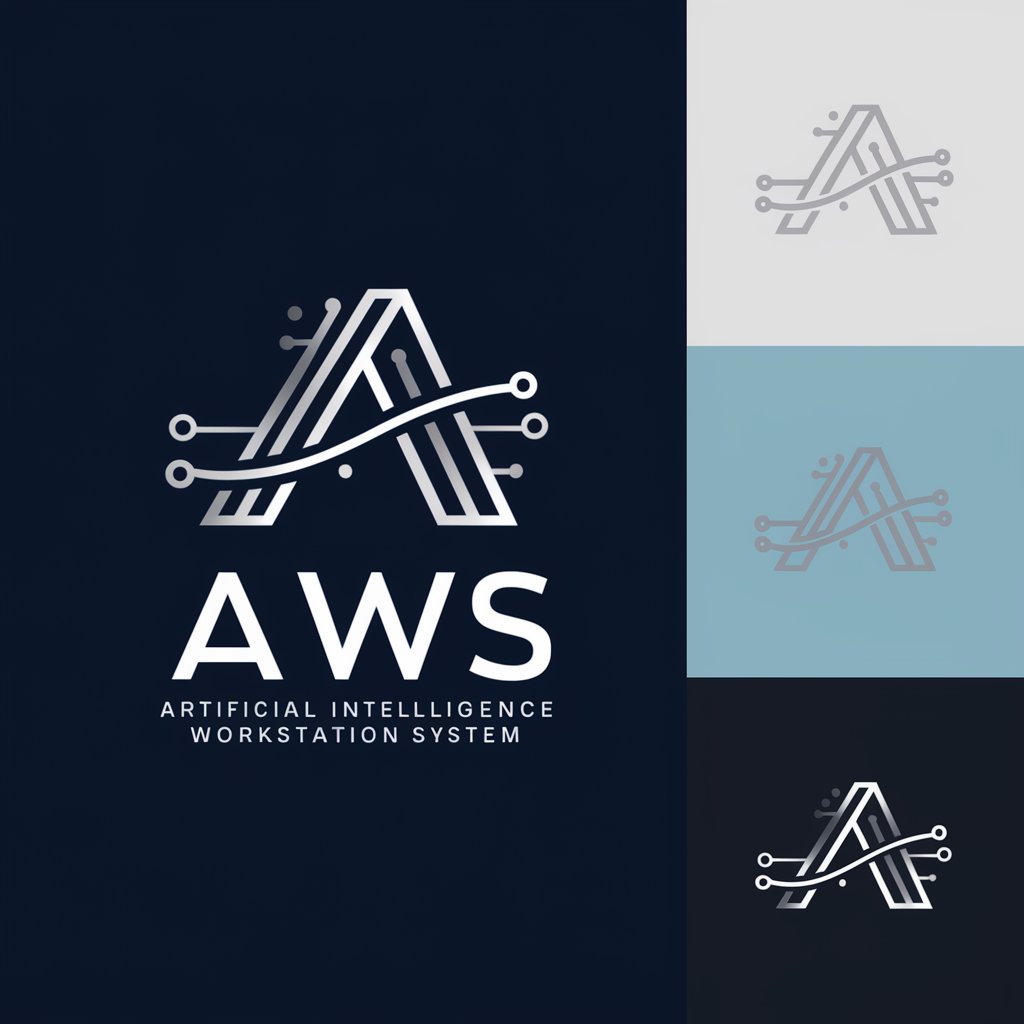AWS - AWS Cloud Platform

Welcome to your AWS digital guide and development partner.
Empowering innovation with AI-powered cloud
How can I optimize AWS cost management for my organization?
Explain the key components of the AWS Well-Architected Framework.
What are the best practices for securing AWS environments?
How can I effectively use AWS Lambda for serverless computing?
Get Embed Code
Introduction to AWS
Amazon Web Services (AWS) is a comprehensive, evolving cloud computing platform provided by Amazon that includes a mixture of infrastructure as a service (IaaS), platform as a service (PaaS), and packaged software as a service (SaaS) offerings. AWS services are designed to provide organizations with compute power, database storage, content delivery, and other functionality to help businesses scale and grow. By using these services, businesses can build and deploy applications quickly and efficiently, without the need for upfront hardware investments or long-term commitments. Examples of AWS's impact include startups leveraging its flexibility to test new ideas rapidly, enterprises reducing infrastructure costs while scaling globally, and government agencies enhancing their mission capabilities. Powered by ChatGPT-4o。

Main Functions of AWS
Compute
Example
Amazon EC2
Scenario
Developers use EC2 instances to run applications, scale capacity as needed, and only pay for the compute time they consume. This enables scenarios like web hosting, batch processing, and big data analytics.
Storage
Example
Amazon S3
Scenario
Companies store and retrieve any amount of data at any time from anywhere on the web, perfect for backup and recovery, archiving, and data lakes, enabling big data analytics and cloud-native applications.
Database
Example
Amazon RDS
Scenario
Organizations use RDS to set up, operate, and scale a relational database in the cloud with just a few clicks. This is ideal for applications requiring a relational database, such as ERP and CRM systems.
Machine Learning
Example
Amazon SageMaker
Scenario
Data scientists and developers use SageMaker to build, train, and deploy machine learning models quickly. This supports use cases like predictive analytics, personalization, and fraud detection.
Networking and Content Delivery
Example
Amazon VPC and Amazon CloudFront
Scenario
Businesses create isolated networks within AWS with VPC, enhancing security. CloudFront delivers content globally with low latency, improving user experience for websites and applications.
Ideal Users of AWS Services
Startups
Startups benefit from AWS's low upfront cost, scalability, and speed to market. AWS's pay-as-you-go model allows them to experiment and iterate quickly without heavy investment.
Enterprises
Enterprises use AWS to drive cost efficiency, innovate faster, and scale globally. They leverage AWS for critical applications, disaster recovery, and global expansion while maintaining security and compliance.
Government and Education
Government agencies and educational institutions use AWS to improve agility and reduce costs. They utilize AWS for secure storage, big data processing, and to enhance learning experiences with technology.
Developers and IT Professionals
Developers and IT professionals use AWS to build and deploy applications, manage infrastructure, and integrate advanced technologies such as machine learning and IoT into their solutions.

How to Use AWS
1
Start with a free trial at yeschat.ai, experiencing AWS's capabilities with no login required and no commitment.
2
Choose the right AWS service for your project needs. AWS offers a wide range of services from compute and storage to machine learning and IoT.
3
Set up your AWS account and configure your service settings. Utilize IAM (Identity and Access Management) to securely manage access to your AWS resources.
4
Deploy your application or project using the chosen AWS services. Leverage AWS management tools for monitoring and maintaining your deployment.
5
Optimize your AWS usage to ensure cost-efficiency and performance. Regularly review AWS recommendations and adjust your resources accordingly.
Try other advanced and practical GPTs
Harmony
Explore the depths of harmony with AI.

Ombudsman Dominicano
Empowering Your Rights with AI

テキスト匿名化ボット
Secure Your Privacy with AI-Powered Anonymization

MAI Content Creating Assistant
Empowering creativity with AI assistance

"Заңгер"
Empowering Legal Decisions with AI

Monroe Mountain Marketing
Elevate Your Marketing with AI

UX Expert
Elevate Your Online Presence with AI-Driven UX Insights

Wildlife Management
Empowering Conservation with AI

GPT Therapist
Empowering Self-Reflection Through AI

Staar Music Mentor
Empowering music careers with AI-driven mentorship.

Bookwise Sage
Empowering Your Reading Journey with AI

Market Maven
Empowering Your Brand's Cultural Narrative

Detailed Q&A about AWS
What is AWS?
AWS (Amazon Web Services) is a comprehensive cloud computing platform offering over 200 fully featured services from data centers globally. It provides infrastructure and application services that enable the deployment and management of scalable applications and services.
How can I reduce my AWS costs?
To reduce AWS costs, consider using reserved instances for predictable workloads, optimizing your resources to match actual usage, leveraging auto-scaling to adjust resources based on demand, and monitoring costs with AWS Cost Explorer.
What security measures does AWS offer?
AWS provides extensive security measures, including network and application firewalls, encryption, access control and identity management with IAM, DDoS mitigation, and compliance programs ensuring data protection.
Can I migrate my existing application to AWS?
Yes, AWS offers tools and services like AWS Migration Hub, AWS Database Migration Service, and AWS Server Migration Service to simplify the process of migrating applications, databases, servers, and data onto its platform.
How does AWS support machine learning projects?
AWS supports machine learning projects through services like Amazon SageMaker for building, training, and deploying machine learning models quickly, and AWS Deep Learning AMIs for deep learning applications, among other tools and services tailored for machine learning and analytics.
